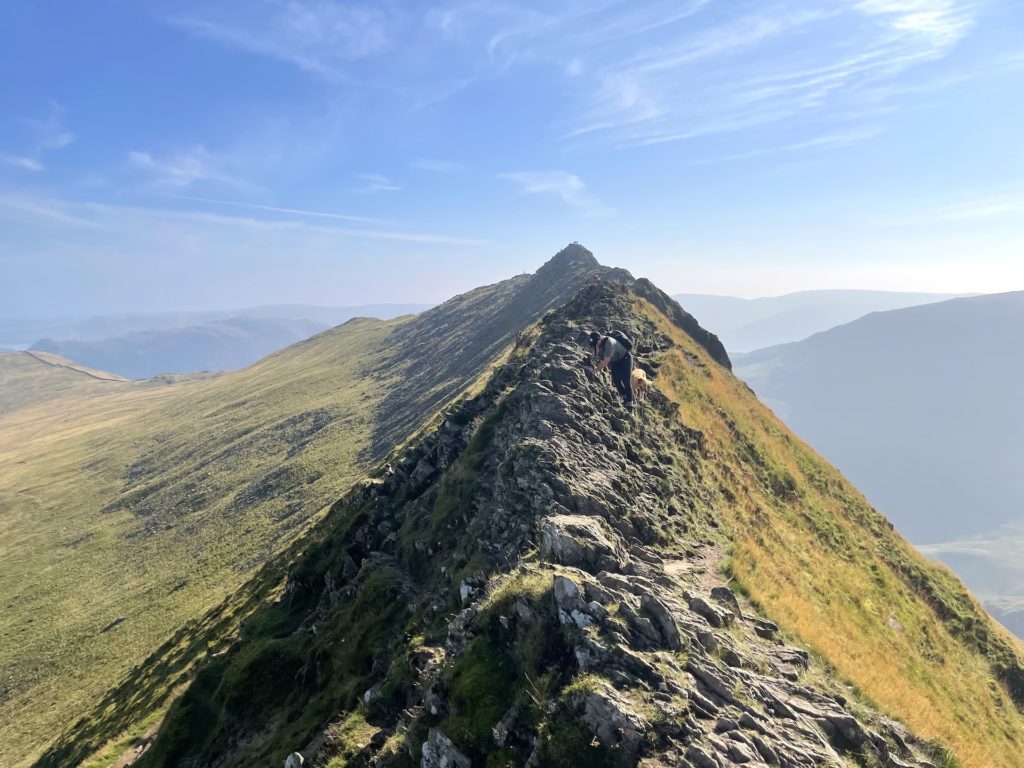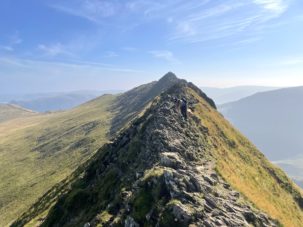
Hiking is one of the most rewarding ways to connect with nature, offering a chance to explore the stunning landscapes of the UK and further afield. However, hiking alone can be riskier than hiking with others, so it’s essential to take precautions to keep safe. Whether you’re going on a multi-day adventure in the Scottish Highlands, hiking the beautiful Lake District, or enjoying the Dorset coast, we’ve collected some essential tips to keep you safe when going solo.
Jump to…
Seven Key Tips
The below tips broadly fall into two categories: preparation, and execution. In other words, there are some things you need to do before your walk, and some things during the walk.
1. Plan Your Route
Before you set out, take the time to plan your route carefully. Choose trails that match your fitness level and experience. Familiarise yourself with the terrain, estimated time to complete the hike, and any potential hazards. Websites and apps like Ordnance Survey and Walkhighlands, or our very own Merlin Maps, provide detailed maps and information on various trails across the UK and abroad – but make sure not to take what they say too literally, and always do your own research.
2. Check the Weather
The UK uplands are known for their unpredictable weather, which can change rapidly. Before heading out, check the weather forecast for your area. We’ve got a full guide on how to use weather forecasts to your advantage: if conditions are poor—such as heavy rain, strong winds, or fog—consider postponing your hike. It’s better to wait for a clearer day than to risk getting lost or injured in adverse conditions. Dress appropriately for the weather, layering your clothing to adapt to changing temperatures.
3. Equip Yourself Properly
Having the right gear is crucial for a safe hiking experience. Invest in a good pair of hiking boots that provide support and grip. Carry a well-fitted backpack with essentials, including:
- Navigation tools: A map and compass. You also need to know how to use them: see our Map and Compass Guide. You can also use your phone, but never rely on it.
- First aid kit: Include bandages, antiseptic wipes, and any personal medications. For a solo trip, I dont think there’s any point in taking much else – but feel free to disagree in the comments!
- Food and water: Pack enough snacks and enough water to stay hydrated.
- Emergency supplies: A whistle, flashlight, and a multi-tool can be invaluable in emergencies.
- Mobile phone: Ensure it’s fully charged, but remember that signal will be weak in remote areas.

4. Stay Aware of Your Surroundings
While hiking alone, it’s vital to remain vigilant. Pay attention to your surroundings and be mindful of any changes in the environment. When you’re alone you don’t have others in your group to spot hazards – you need to do it all yourself. Trust your instincts—if something feels off, it’s okay to turn back or change your route.
5. Know Your Limits
Hiking alone can be empowering, but it’s essential to know your physical and mental limits. Don’t push yourself to complete a trail if you’re feeling fatigued or unwell. Take regular breaks to rest and refuel. If you find yourself struggling, it’s better to cut your hike short than to risk injury or exhaustion.
6. Use Technology Wisely
While technology can enhance your hiking experience, it’s important not to rely solely on it. GPS devices and smartphone apps can help with navigation, but they can fail due to battery issues or lack of signal. Always carry a physical map and compass as a backup. Additionally, definitely download offline maps before your hike, so you have access to navigation tools even without a signal. If you own a Garmin, you can upload your route to it to help with navigation – like this.
7. Be Prepared for Emergencies
Despite your best efforts, emergencies can happen. Familiarise yourself with basic first aid and how to respond to common hiking injuries, such as sprains or cuts. If you find yourself in a dangerous situation and need help, stay calm and assess your options. If you have a mobile signal, call for help: dial 999, then ask for the Police and then Mountain Rescue.
If there’s no service, though, you’ll really feel the lack of a hiking partner – and is why it’s especially important to have a whistle. The internationally-recognised call for help is six blasts of a whistle (about a second long, with a few seconds between each), repeated once per minute. Sound travels a surprisingly long way, so it’s remarkably effective.
8. Tell Someone
Almost certainly the most important thing when hiking alone is to tell someone where you are and what you’re doing. Even if it’s the person behind the bar at the local pub – someone needs to know where you’re going, what you’re doing and when to expect you back. That way, of you don’t get back in time they can raise the alarm – and, most importantly, they can help narrow the search down to your planned route so that emergency services can find you quickly.
Conclusion
Hiking alone in the UK can be a fulfilling and exhilarating experience, offering a chance to immerse yourself in nature. By planning your route, checking the weather, equipping yourself properly, and staying aware of your surroundings, you can significantly reduce the risks associated with solo hiking. Remember, the key to a safe and enjoyable hike is preparation and awareness. So lace up your boots, pack your bag, and set out on your adventure with confidence!

